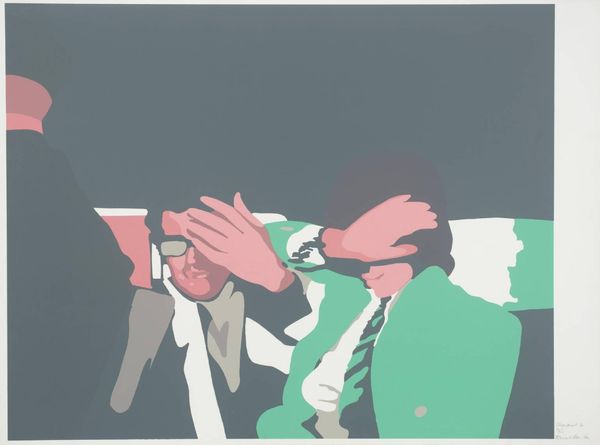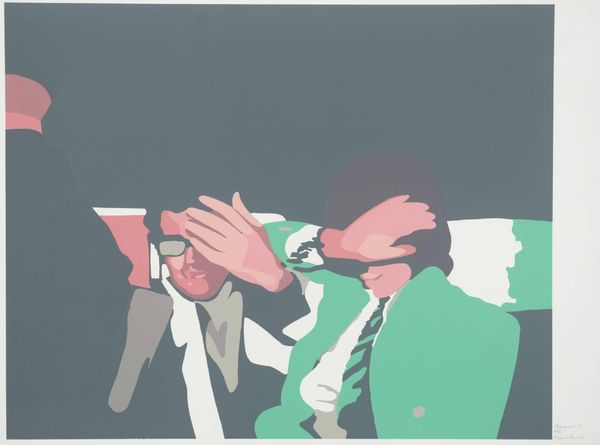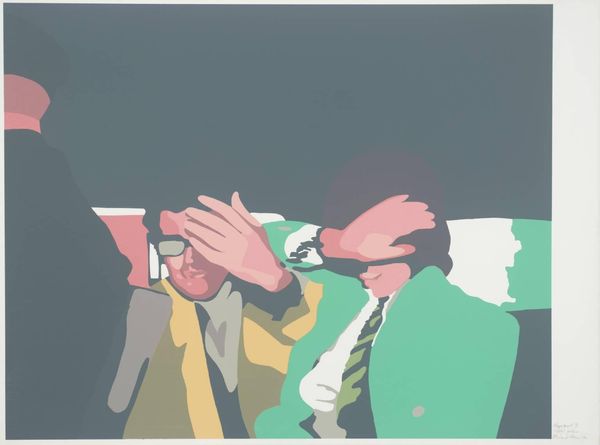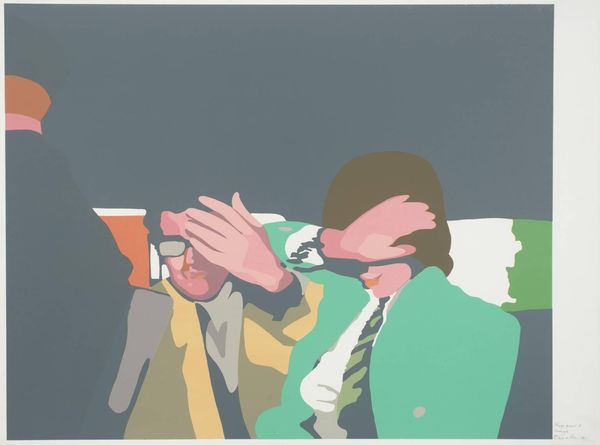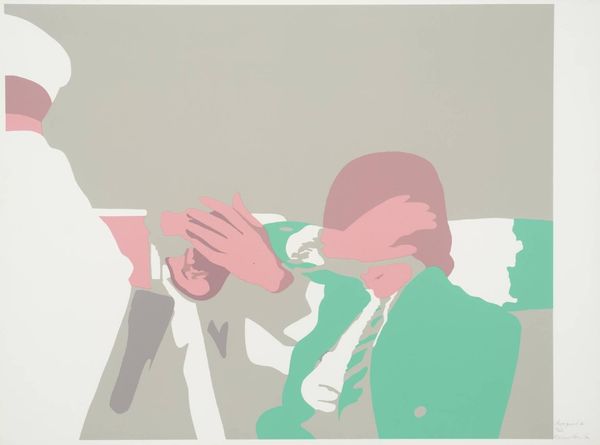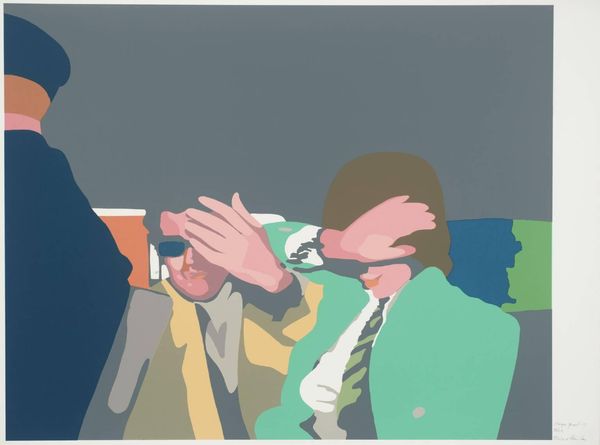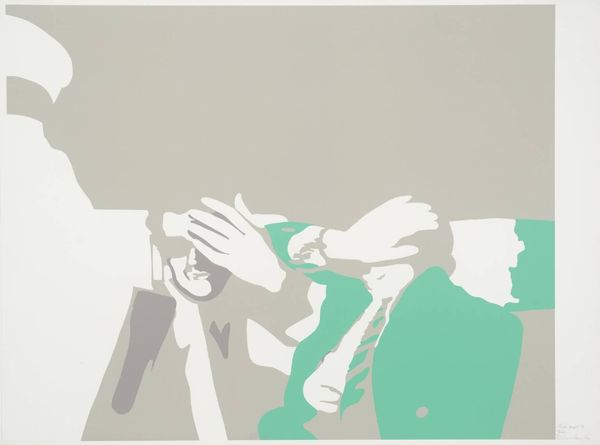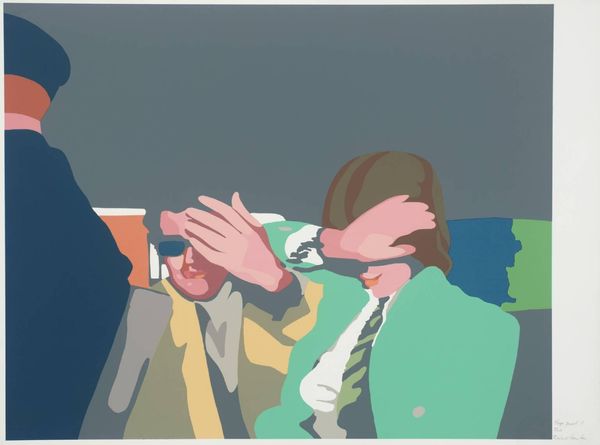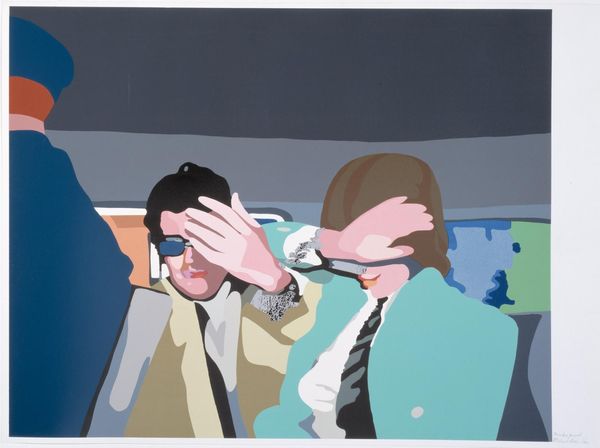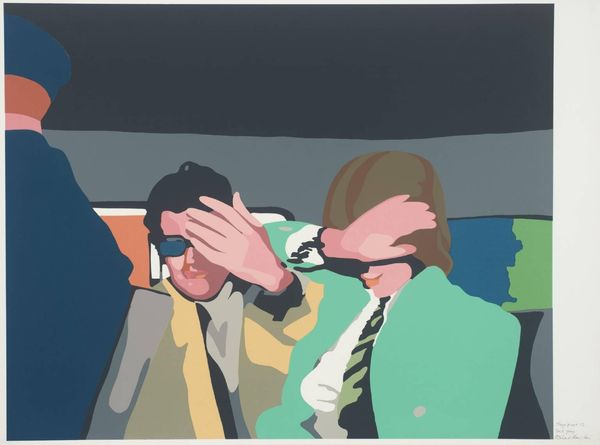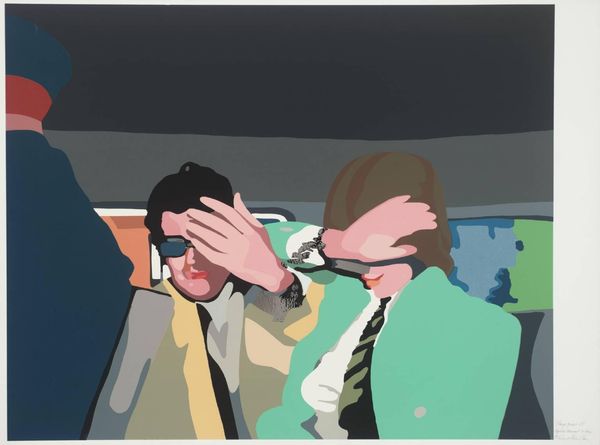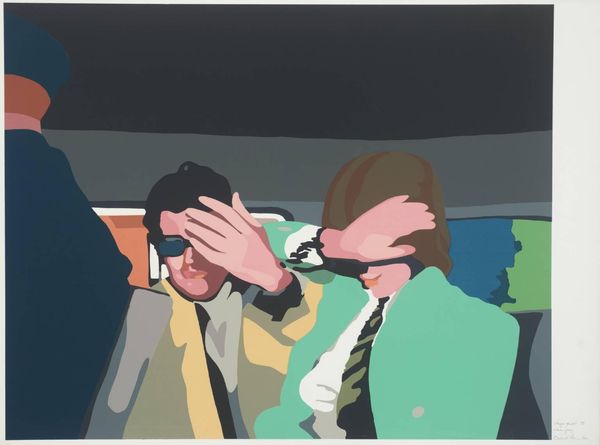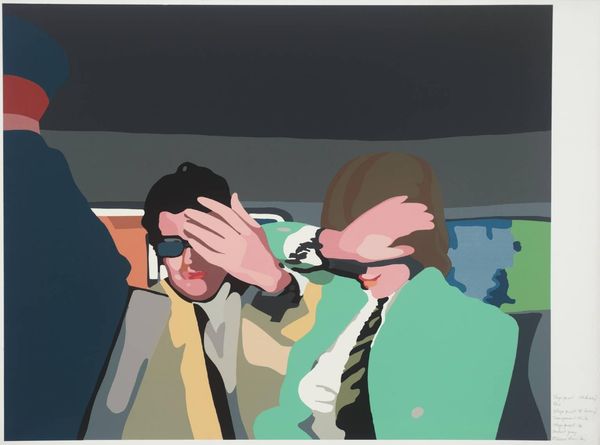
Dimensions: image: 681 x 858 mm
Copyright: © The estate of Richard Hamilton | CC-BY-NC-ND 4.0 DEED, Photo: Tate
Curator: Richard Hamilton’s "Stage Proof 5" presents quite a stark image, doesn't it? The flat planes of color are immediately striking. Editor: Yes, and the hands covering the eyes suggest a refusal to see, a deliberate blindness. Is it willful ignorance, or forced censorship? Curator: Hamilton was deeply invested in the processes of reproduction, the way images are made and remade. Here, you can almost feel the screen printing process, the layering of colors and the way the image is built up. Editor: It feels very much like a cultural symbol of avoiding reality, perhaps even a comment on political apathy or denial in the face of uncomfortable truths. The hands are so deliberately placed. Curator: It is a rather pessimistic view, certainly, but Hamilton was always aware of the social forces shaping our perception. The work becomes a study in the consumption and creation of images. Editor: True. Looking at it again, I wonder if it’s about the manipulation of perception, the power of images to hide as much as they reveal. Curator: A potent combination of materials and meaning, then, wouldn't you say? Editor: Absolutely. It's a chilling image, made all the more powerful by its formal simplicity.
Comments
Join the conversation
Join millions of artists and users on Artera today and experience the ultimate creative platform.
tate 8 months ago
⋮
Release – Stage Proofs 1-13 and 16-19 (P02416-32; the series is incomplete) is a group of seventeen prints showing the process of building up colour to make the print Release (P04254). Each proof represents the successive addition of a screen, made from a hand-cut stencil, used to apply a particular colour. The completed print Release combines the seventeen colour screens, each used once, and the photographic black screen which has the texture of an imprint on canvas as well as the photographic halftone, used twice.
